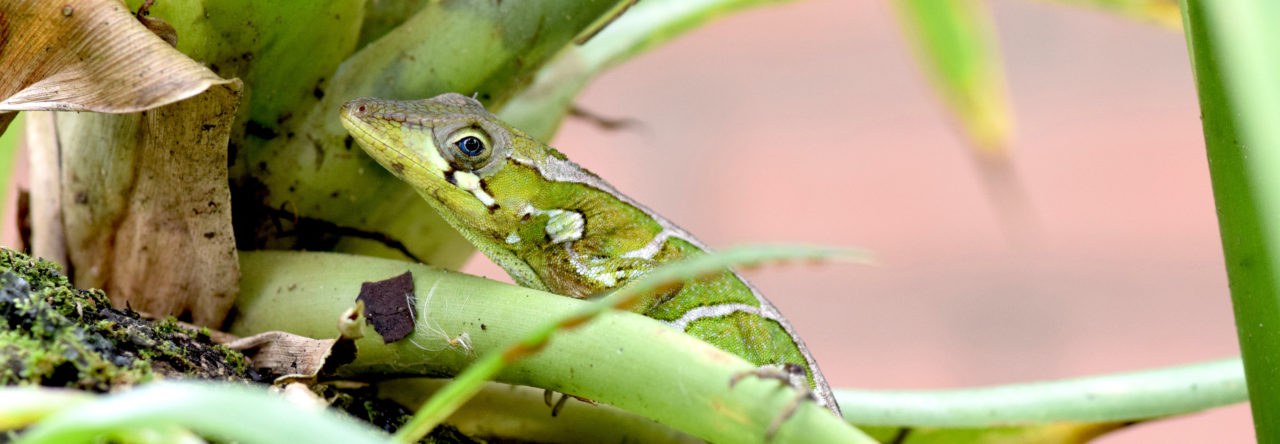
Anolis chlorocyanus (photo @ Rich Glor). Anolis chlorocyanus occurs north of Mertens' Line, A. coelestinus to the south. Map on right (from Glor and Warren, 2011) illustrates that suitable conditions for both species occur in the range of the other species (the warmer the color, the more suitable the area).
Many sets of closely related species exhibit a geographic distribution in which species only come into contact at their range border, with one species replacing another across the geographic landscape. Such a “parapatric” distribution could be explained in many ways, such as:
1. The species are adapted to different environments, and their distributions reflect geographic differences in environmental conditions;
2. The environment does not change geographically, but the species are so ecologically similar that neither is able to displace the other from its current range;
3. The species are not reproductively isolated; when they come into contact, they interbreed, thus preventing coexistence;
4. The species are newly-arisen, and have not yet expanded their ranges into sympatry, or one species has not yet displaced the other completely.
A case in point are the large green anoles of Hispaniola, Anolis chlorocyanus and A. coelestinus. Except for their dewlap, these two trunk-crown species are nearly identical in morphology, and they also occupy similar structural habitats. Yet, A. coelestinus occurs only in the southern peninsula, whereas A. chlorocyanus occurs throughout the rest of the island.
Read More










